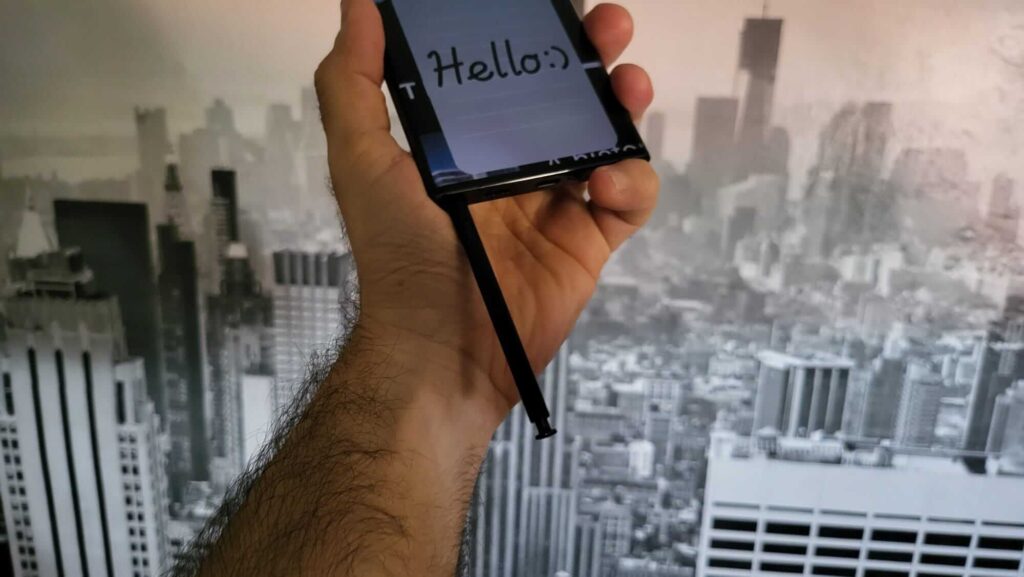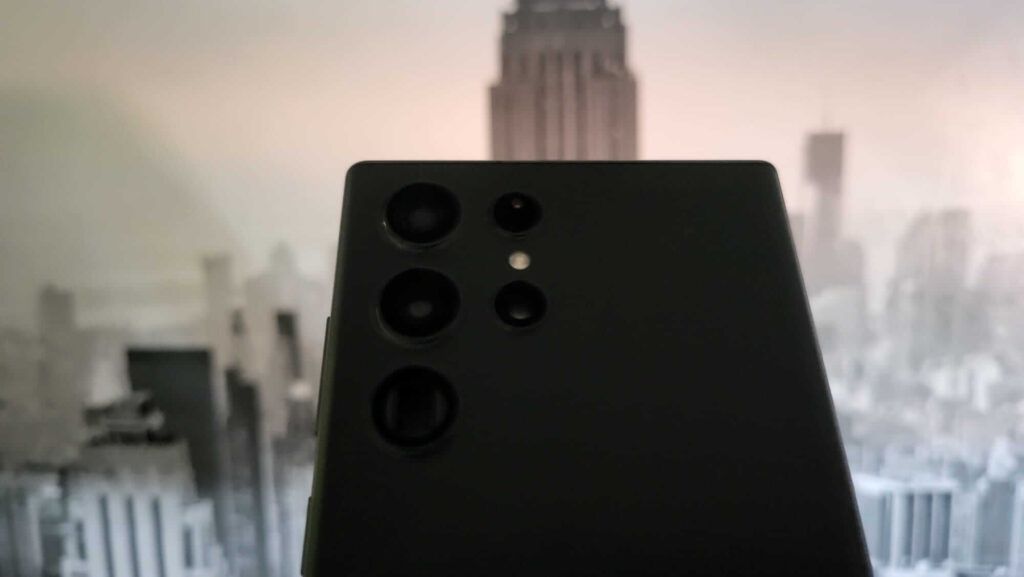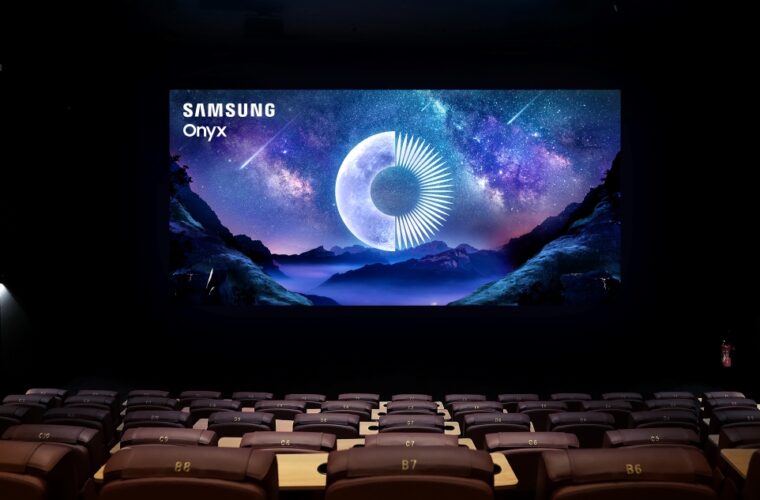It was clear that Samsung’s farewell to the Galaxy Note series was not real. That is: it is in the nomenclature, in saying goodbye to the family’s marketing name, but the Note is still here, and it is called the Galaxy S22 Ultra. We tested it, and this is our review.
The Galaxy S22 Ultra is one of the most premium devices Samsung has ever produced. The device combines the design, features, and core attributes of the Galaxy Note Ultra line with the Galaxy S Ultra in the hope of wooing those looking for the best in terms of productivity, power, and photography. Can Samsung succeed in pursuing that goal? The phone may not have the ‘wow’ factor of the flexible Galaxy Z Fold 3, but it is Samsung’s flagship device to date.
The Galaxy S22 Ultra is a smartphone that boasts the best possible specifications and offers the highest possible degree of functionality in a single hardware component. It is the best product in the Android ecosystem. The phone has more features, more cameras, and more software to use than many competing phones. This certainly gives the device some advantages. If there is one design element I appreciate about the Samsung Galaxy S22 Ultra, it is the camera module or, more correctly, its lack. While the lens arrangement on the Galaxy S22 Ultra may be the same as on the S21 Ultra, the raised module has disappeared. The S22 Ultra does away with the unsightly camera module, although the raised circular lenses are still quite large.

Ultra is a giant sheet of metal and glass with sharp edges but slightly rounded side edges. The glass has been upgraded to Corning’s Gorilla Glass Victus Plus, and the metal frame has been reinforced with Armor Aluminium. Keen observers will notice that the metal rails along the phone’s sides are thicker and more curved than those on the Note 20 Ultra. This gives the phone incredible rigidity and smoothes the side edges, making it more comfortable to hold.
The S22 Ultra retains the IP68 rating, which will allow it to stay in water up to 1.5m for up to 30 minutes. This should save it from most splashes or accidental bathing. It is slightly shorter than the Note 20 Ultra but is wider, thicker, and heavier. It is definitely an ‘important’ phone, and putting a case on it makes it bigger and bulkier.
Interacting with the phone via its various controls will be natural for anyone who has used a Samsung phone. The power button is located just above the centre on the right edge. The button is a little small but offers excellent feedback. The longer volume switch is above the power button and offers almost perfect feedback. Samsung has moved the SIM card tray from the top of the Note 20 Ultra to the bottom edge of the Galaxy S22 Ultra, although, unlike Note, it does not support memory cards.
The S Pen slot is no problem at all. A quick press pops out the end cap, allowing you to grab the stylus and slide it out. This year’s S Pen has a slightly grippy coating that makes it easier to hold without slipping. It has the same size and shape as the S Pen on the Note 20 Ultra but has been improved with faster response times when writing on the screen. The stylus transfers the utility button, which allows you to perform tasks such as clicking the shutter when using the camera or flipping through a PowerPoint presentation.
Like many flagships, the S22 Ultra has stereo sound on par with most other phone speakers in this price range. Audio while gaming, playing music, and watching movies can reach respectably high volumes with minimal distortion. The sound balance, however, tends towards the mid-range and high-end, leaving the lower tones noticeably absent.
The phone’s screen is slightly smaller than the Note 20 Ultra at 6.8 inches but has the exact resolution, approximate pixel density, and peak refresh rate. The 2x Dynamic AMOLED technology is the actual improvement, which aids viewing in contrast and brightness. It is default set to FHD+ with the adaptive refresh rate of 120 Hz enabled. In this mode, it excels in everything. Changing the resolution to QHD+ or the refresh rate to static 60Hz does not produce much visual change, except in certain circumstances, such as scrolling through menu screens.

The Samsung Galaxy S22 Ultra was one of the first phones to come with Qualcomm’s latest flagship SoC, the Snapdragon 8 Gen 1. The 8 Gen 1 replaces the Snapdragon 888 in Qualcomm’s line-up, widely used in many flagship phones in 2021. However, the Snapdragon 8 Gen 1 is only available in certain regions, while European markets, like ours, get a version with Samsung’s Exynos 2200 SoC inside. Whatever the processor, we have 8 GB or 12 GB of RAM and 128 GB or 1 TB of storage space.
In terms of day-to-day performance, the Galaxy S22 Ultra is perfect. The daily user experience is flawless. Dealing with media-rich social networks doesn’t clog up the phone at all. Streaming YouTube videos or Netflix movies is no problem, nor is multitasking with two apps opens simultaneously on the screen. Downloading, installing, and running multi-gigabyte games is a breeze.
Batteries with a capacity of 5,000 mAh are practically the norm for flagship smartphones at this price. The Galaxy S22 Ultra improves on the 4,500 mAh battery in the Note 20 Ultra. It is a good starting point. Many factors play a role in determining battery life, including screen brightness, resolution and refresh rate, CPU/GPU, background activities, etc. The Galaxy S22 Ultra comes with the phone set to FHD+ resolution with the adaptive refresh rate of 120 Hz enabled and the processor speed control set to ‘optimized’ instead of ‘high’ or ‘maximum.’ Adjusting any of these may increase or decrease battery life accordingly.
The photography
Samsung has always pushed innovation with its smartphone cameras, particularly on its Note and Galaxy S series devices. Every year it ups the ante, adding another lens, shooting mode, making the lenses faster, or upgrading the underlying sensors. What’s in store this year? The lens layout is a direct nod to the Galaxy S21 Ultra, as are the megapixels behind each lens. This means a 108 MP main (with pixels reduced by a factor of nine to 12 MP), a 12 MP ultra-wide, a 10 MP 3x optical telephoto, and a 10 MP 10x optical telephoto. The same applies to the 40 MP selfie camera on the front and the rear (8K) and front (4K) video capture resolutions.
The camera hardware might repeat the mighty S21 Ultra, but the S22 Ultra has an ace up its sleeve in the processor. The Snapdragon has an upgraded image signal processor, allowing Samsung to do more with the raw photographic details. This impacts features such as the new night mode, which Samsung calls ‘Nightography’ and claims uses AI to attract more light and help bring out colors.
Samsung’s camera app is a powerful tool to aid shooting. It has various settings at your fingertips along the left side of the viewfinder that allow you to make quick adjustments or reach settings to edit at a deeper level. The mode dial is simple, and there are many to choose from.

The S Pen
The action of the S Pen on display has improved over previous iterations. As before, it supports more than 4,000 levels of pressure, but Samsung has reduced the response time to 2.3 ms. This helps with the feel of the actual pen, as the delay between touching the display and seeing a result on the screen has been substantially eliminated. It is outstanding and easily the best stylus experience you will get from a smartphone. Besides multitasking, the critical productivity tools of the Galaxy S22 Ultra are still Samsung’s DeX feature and the phone’s ability to connect with Windows PCs. With DeX, you can broadcast a desktop-like environment to a monitor or PC of your choice. When in DeX mode, the Galaxy S22 Ultra can act like a trackpad, allowing you to navigate the on-screen user interface.
Is it worth it?
The Galaxy S22 Ultra is a bit of a “greatest hits” collection from Samsung. This phone ticks most of the boxes regarding specifications, from the processor to the camera with higher megapixels and, of course, the integrated S Pen and all its features. It has the core hardware of the Note 20 Ultra with the battery and camera module of the S21 Ultra. It also packs much of the same productivity-enabling software as previous Note devices combined with the power of the S Pen while keeping the total package reasonable in cost. Samsung has undoubtedly put together a powerful pocket machine in the Galaxy S22 Ultra. It doesn’t come cheap, but it is worth the euros spent.



